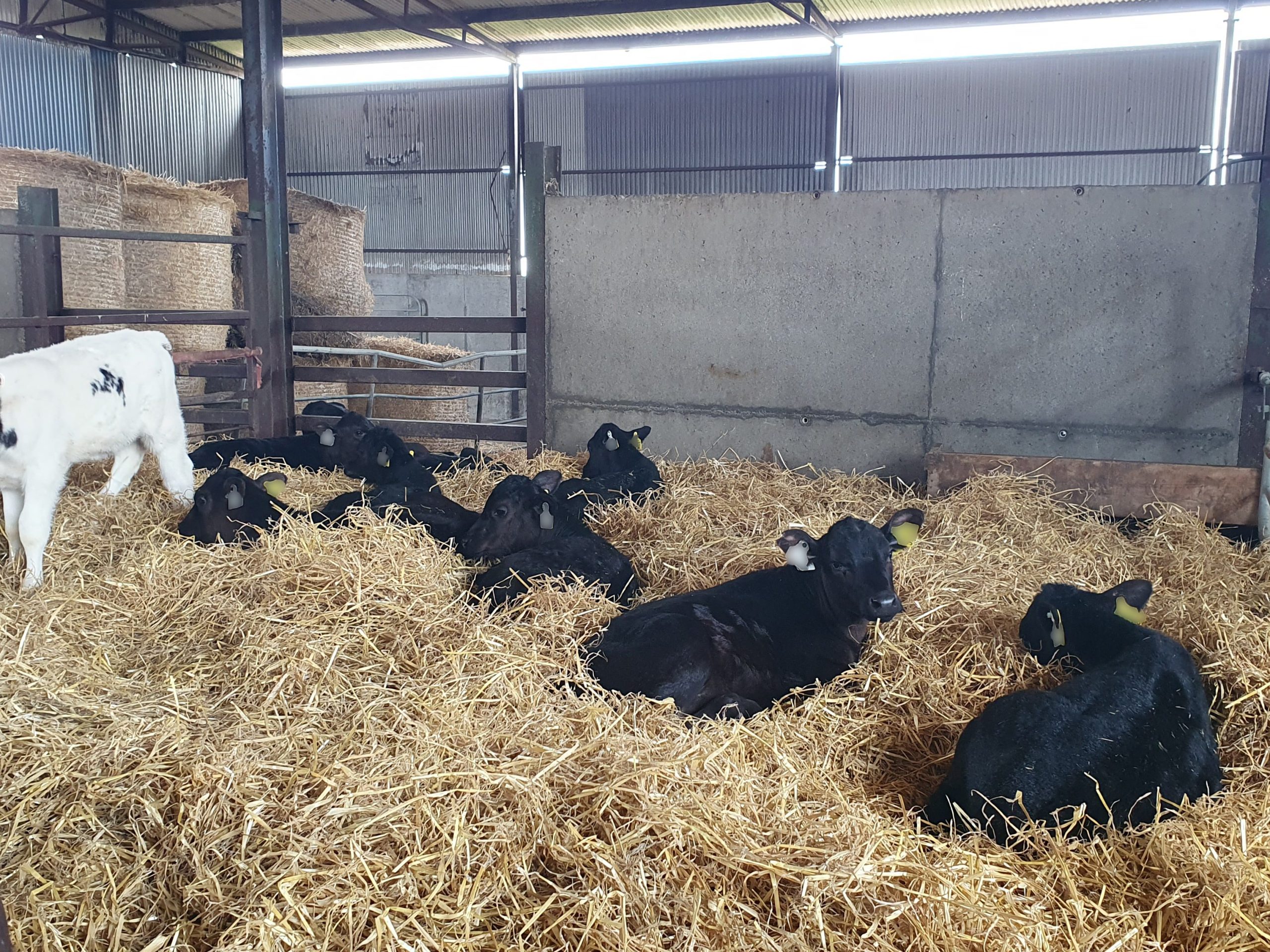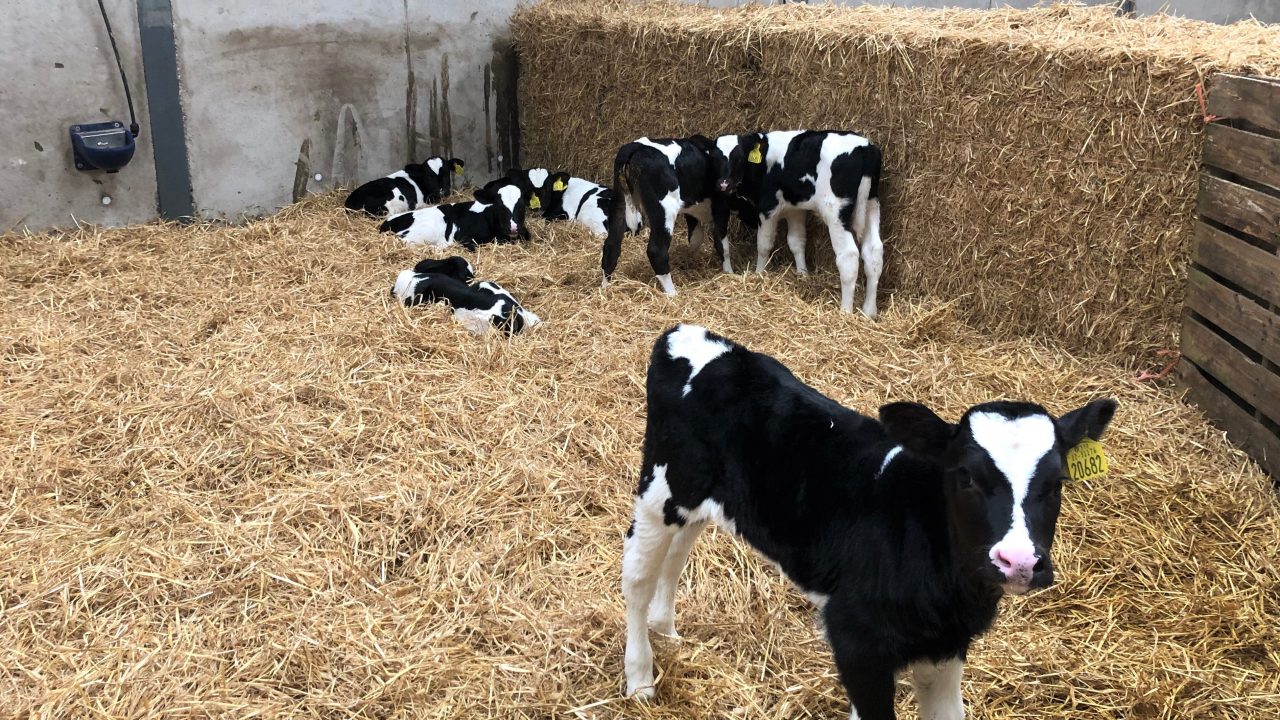The next couple of weeks are crucial in getting prepared for the arrival of calves for autumn calving herds, for which pneumonia prevention always plays an important role.
Many farms will have already started to calve down, but for others, the final few preparations are being made to ensure the successful arrival of calves and transition of cows and heifers back to the milking parlour.
These final few preparations are going to be key in minimising disease throughout the calving season: ensuring that pens are power washed and disinfected; the shed is airy and well-ventilated; and run-off can escape from under bedding into channels.
Pneumonia is the most common cause of death and poor performance in young cattle from weaning to 10 months-of-age, and it is the inflammation of the lungs which can cause permanent damage.
What is quite often not accounted for when talking about the costs associated with pneumonia outbreaks is the impact it has on growth rates, calf performance, and calf health.
Pneumonia can reduce average live weight gain by up to 200g/day and these animals may never recover completely, which increases their lifetime costs and reduces their efficiency to convert feed to gain or performance.
According to Animal Health Ireland (AHI), 14.5% of dairy heifers that get pneumonia as calves fail to reach their first lactation, which is a staggering percentage.
If those heifers are then lucky enough to calve down and start milking, they have, on average, a reduction in first lactation of 150kg, a 30-day increase in time to first calving and will be on average 29kg lighter at 14 months-of-age.
Pneumonia
In most scenarios, viral infection occurs first followed by bacterial infection, with the high risk periods occurring after the grouping or mixing of calves, after weaning off milk or milk replacer, and in changeable weather conditions.
Pneumonia is the most common disease associated with housed calves. According to Teagasc, approximately 3% of calves born die from pneumonia in the first 12 weeks-of-life, meaning management in the first few weeks is essential.
Pneumonia is often caused by a number of different things and so, is often described as a multifactorial disease and these factors have to be minimised.
Factors leading to pneumonia are as follows:
- Viruses;
- Bacteria;
- Poor colostrum intake;
- Poor hygiene in pens;
- Poor housing/ ventilation;
- Presence of older animals;
- Over-crowding/stress;
- Presence of of BVD virus;
- Poor nutritional status.
It will take two to three days for the infection to turn into pneumonia in a calf, but calves can take a turn quite quickly, meaning that early detection is crucial.
Initial signs will include: a reduced feed intake; being ‘off form’; dullness and ears drooping; hollow sides; fever of over 39.5℃; coughing; increased respiratory rate; and watery discharge from nose and eyes.
Treatment and prevention
When calves are detected as sick, they should be treated and isolated on their own until recovery. Vaccination and providing good ventilation is a must and using antibiotics if necessary is crucial.
Antibiotics are ineffective against viral infections, but in cases where bacterial involvement is suspected, antibiotic treatment is required.
In rare cases, lungworm may be causing pneumonia in young calves and these will not respond to antibiotic treatment.

In order to prevent pneumonia from occurring, good hygiene is needed at calving, followed by removing the calf immediately from the calving pen.
The calf is going to need good quality colostrum after birth and continue to receive that colostrum for four to five days after birth.
Deficiencies in vitamin E and selenium will weaken the animal’s immune system, and so any nutritional deficiencies should be checked for.
Appropriate calf housing with good ventilation, plenty of air, no draughts and well-bedded dry lying area is crucial – make sure that effluent can get away from underneath calves.
Prevent scour and manage outbreaks properly if they occur. If you are grouping calves, make sure to group them by age and size to make management and feeding easier and to keep the group stable.
A vaccination strategy should be implemented on the farm with calves being vaccinated from two weeks of age – usually two shots, four weeks apart, followed by a booster before the next risk period.
For the next few weeks, ensure that ventilation in the calf house is sufficient.
If problems have occurred in recent years, farmers should change their side sheeting to vented sheeting, spaced timbers or Yorkshire boarding to allow fresh air in and bad air out, without creating a breeze.
Ideally, the shed should have a canopy at the top of the roof to allow stale air out.
This is not always possible for older builds or converted sheds, but an option is to install a ventilation system, which will constantly remove stale air in exchange for fresh air.

